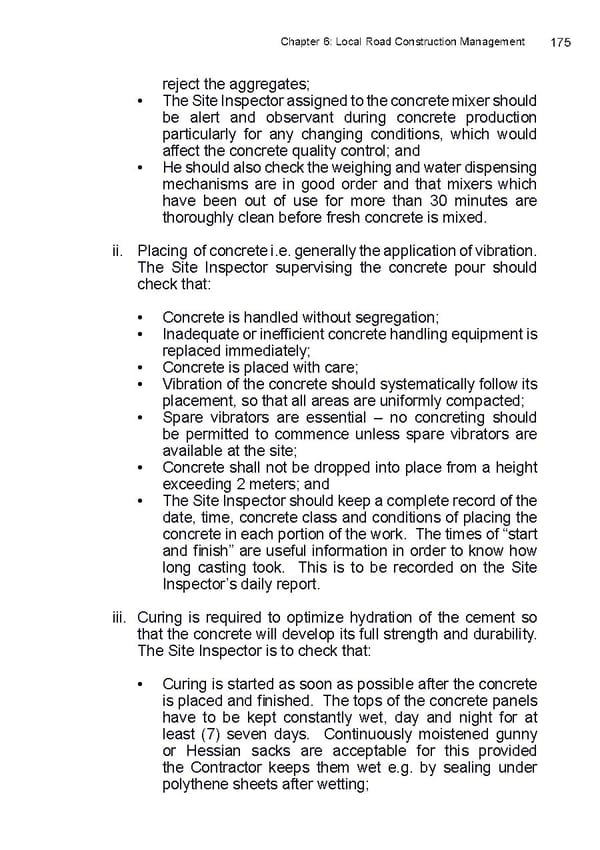Chapter 6: Local Road Construction Management 175 reject the aggregates; • The Site Inspector assigned to the concrete mixer should be alert and observant during concrete production particularly for any changing conditions, which would affect the concrete quality control; and • He should also check the weighing and water dispensing mechanisms are in good order and that mixers which have been out of use for more than 30 minutes are thoroughly clean before fresh concrete is mixed. ii. Placing of concrete i.e. generally the application of vibration. The Site Inspector supervising the concrete pour should check that: • Concrete is handled without segregation; • Inadequate or inefficient concrete handling equipment is replaced immediately; • Concrete is placed with care; • Vibration of the concrete should systematically follow its placement, so that all areas are uniformly compacted; • Spare vibrators are essential – no concreting should be permitted to commence unless spare vibrators are available at the site; • Concrete shall not be dropped into place from a height exceeding 2 meters; and • The Site Inspector should keep a complete record of the date, time, concrete class and conditions of placing the concrete in each portion of the work. The times of “start and finish” are useful information in order to know how long casting took. This is to be recorded on the Site Inspector’s daily report. iii. Curing is required to optimize hydration of the cement so that the concrete will develop its full strength and durability. The Site Inspector is to check that: • Curing is started as soon as possible after the concrete is placed and finished. The tops of the concrete panels have to be kept constantly wet, day and night for at least (7) seven days. Continuously moistened gunny or Hessian sacks are acceptable for this provided the Contractor keeps them wet e.g. by sealing under polythene sheets after wetting;
 Local Road Management Manual Page 175 Page 177
Local Road Management Manual Page 175 Page 177